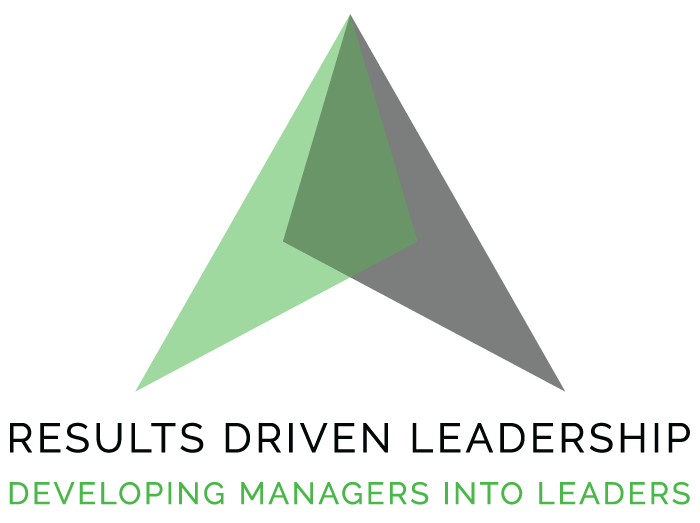TABLE OF CONTENTS
Empower and engage your employees like never before!
As an entrepreneur or leader, steering your team toward peak performance and taking ownership can often feel difficult and highly frustrating. Why don’t they just do what they are supposed to do????
The key to this challenge? Instilling a sense of ownership and accountability in your team. In this blog, we’ll dive into practical strategies to lead your team to embrace their roles fully and drive your team’s and company’s success.
Pinpointing the Core Issue
In the journey to move from manager to leader and effective team management, a common stumbling block is a lack of ownership among team members. Why don’t they just accept what I’m asking them to do and do it?
Well, there are 16 reasons why employees don’t do what you want them to. Unfortunately, they are all on you. But we often blame them. But it’s not them. They are never going to be any better as a team than you are as a leader.
When your team lacks the commitment to take ownership, the task at hand for you, as a manager moving to a great leader, is to foster a culture where each member feels responsible and empowered to contribute significantly. That’s the ticket! What is the technique or leadership practice you have to change in you to achieve the change in them?
Let’s start with the first big misstep I see almost every time a team is not bought in and committed.
The Power of ‘Why’: Driving Change with Purpose
A critical element often overlooked in team management is the importance of explaining ‘why’ a change is necessary or why fixing a particular problem is crucial. Understanding the ‘why’ behind need for change or actions not only provides clarity but also significantly boosts motivation and engagement among team members.
First step. If you are taking direction from your boss, it is essential that you fully understand the “Why” behind the change or the importance of the project. If you don’t know it and own it, you cannot confidently transfer ownership to your team. You will come across as a weak leader.

Unlock Your True Potential: Speak Up, Ask Questions, and Make a Difference
Being a “team player” doesn’t mean blindly accepting every task that comes your way from above. In fact, you have the responsibility and power to shape the conversation and make a meaningful impact. Don’t be afraid to voice your thoughts, ask important questions, and shed light on the obstacles your team is facing. Seek clarity and be fully educated and personally bought in. You can’t achieve this unless you ask questions or even push back a bit if it does not make sense to you.
By doing so, you can help your boss gain a deeper understanding of the challenges and work together towards achievable goals.
If you just say yes to everything, you will continue to be pushed into commitments you’re responsible for that your team will not be committed to. Why? You’re not committed. Your team will come up short of expectations, or you will be frustrated and stressed out more often than you need to be.
You’re just doing what you are told to do? That’s weak! Step up, take control, and ask questions. Who, What, Why, When, How, Where and be the catalyst for positive change in your team. Gain clarity, speak your opinion. (in a respectful way) and be a more proficient critical thinker.
You will reap huge rewards and you will be fully engaged with what you are being asked to do. Even if you disagree with what is being asked, you still have to go get your team to buy in and achieve.
Well, of course, but at least you’ve asked the questions, and you have the details behind the why so that you can respond if your team asks you.
“I’m not sure” is never the answer! Know the why.
Download My Critical Thinking Cheat Sheet.
The next step now is the importance of explaining the ‘why.’
This cannot be overstated. It is a powerful tool that not only clarifies the need for change but also actively engages and motivates your team. As a leader, make it a priority to communicate the ‘why’ behind every significant decision or change. This approach will not only enhance the effectiveness of your team but also contribute to a more dynamic, responsive, and successful organization. I’ve seen the motivation flip from negative to positive so many times once the ‘why’ is introduced and explained.
Navigating Resistance to Change: Resistance to change is often rooted in a lack of understanding. By clearly articulating the ‘why’, leaders can address uncertainties and fears, making it easier for team members to embrace change and move forward collectively.
Remember you are always managing perceptions. This step controls and informs their internal narrative and any dogma they possess dissipates.
Huddle UP and Get After It!
Now, You must go get the team into the problem or objective. To do so effectively, you should strive to conduct a meeting with the group. Do not make the mistake of only including a few of your key team members. Bring them all in for the best results.
You must clearly explain the problem, change or objective.
When team members understand the reasons behind a change or a goal, they are much more likely to align their efforts with the company’s objectives. This understanding helps them see the bigger picture and how their contributions fit into it.
Understanding the Stakes or Consequences
As business owners and managers, we all know that achieving our goals and making changes can bring enormous benefits to our teams and our organizations. However, your team must be very aware of this, too. Sometimes, they may fail to consider the stakes or consequences. You must share how these consequences can have a lasting impact on them, the team and the company.
Your team must understand the stakes or consequences of our actions or lack of change. This is crucial to achieving our objectives and how we can avoid negative outcomes.
What Does This Entail?
Before taking any action, it is crucial to identify what can go wrong, the potential risk, and how this can affect your business. Doing so can help you plan your actions, anticipate potential risks and enable you to develop strategies that will help minimize these risks.
Communicating the Risks and Stakes using open and honest communication is the key. As a leader, you need to be transparent with your team about the potential outcomes if the goal is not achieved or the change is not implemented. Everyone should be aware of the stakes and understand the impact of their actions on the entire organization. This will help create buy-ins and motivate the team to work towards a meaningful goal.
Identifying potential risks and communicating the impact of actions with your team and stakeholders are essential in achieving an objective without any negative consequences. By having a framework in place to manage consequences and acting swiftly to address any setbacks, we can be proactive and avoid any potential negative consequences. This helps us to maintain our team morale, productivity, and ultimately our bottom line.
Acknowledge Your Role
It’s crucial to acknowledge your contribution to this challenge. Even how you may have contributed to the problem. Recognizing and owning your part in this dynamic is the first step towards a solution.

Create the Solution Collaboratively
The path to exceptional execution as a leader lies in collaboration. Engage your team in the problem-solving process. Their insights and experiences are invaluable. This approach not only leads to more effective solutions but also ensures team buy-in.
Establish a Collaborative Framework: Begin by setting clear objectives for the collaboration. Explain the issue at hand and the goals you aim to achieve. This sets the stage for focused and productive discussions.
Diverse Idea Generation: Encourage every team member to contribute their ideas and opinions. This can be done through brainstorming sessions, where all ideas are welcomed without immediate judgment or criticism. Emphasize that every suggestion is valuable and will be considered.
Utilize Collaborative Tools: Make use of collaborative tools and platforms that allow team members to contribute ideas asynchronously. Tools, like shared digital whiteboards, online suggestion boxes, or collaborative documents, can be particularly effective for gathering input from everyone, including those who might be less vocal in meetings. More on this later.
Structured Discussion and Debate: Organize structured discussions where each idea is explored and debated. This can be done through round-table discussions or smaller group breakouts. Ensure that each idea is given fair consideration and that discussions are guided by the principles of respect and open-mindedness.
Synthesize and Integrate Ideas: After gathering all the ideas, work with the team to synthesize and integrate them into potential solutions. This process should be transparent and inclusive, ensuring that elements from different suggestions are woven into the final plan.
Vote or Reach Consensus: Depending on the nature of the decision, use voting mechanisms or strive for consensus to finalize the solution. This process should be democratic, giving each team member a sense of participation in the decision-making process.
In your collaborative sessions, ask them! What can go wrong if we take this approach?
In reality, you may not be able to capture it all in just one meeting. Many times, you have to give your team members time to think about it. Regroup and distill their ideas and solutions over the course of meetings and even breakouts.
“Oh, come on I don’t have time for this!” Yes, it takes longer, but you avoid delays, changes and mistakes that will slow you down later if you don’t slow it down in the beginning. You want to make sure you implement the change or solution one time, right!
“No Matter What Business You’re In You’re In The People Business!”
Engaging the Quiet Voice

In any team, there’s a diversity of personalities and communication styles. According to the DISC Behavior Assessment, a significant portion of the population, nearly 70%, falls under the High “S” category. These individuals are typically more reserved and may not readily share their thoughts or opinions. However, their insights can be invaluable. Here’s how to effectively draw out ideas and suggestions from these quieter team members:
Create a Safe and Inclusive Environment: Start by fostering a team culture where every voice is valued. Emphasize that every team member’s input is not only welcomed but essential for the team’s success. This creates a safe space for quieter members to speak up.
Utilize Open-Ended Questions: Open-ended questions are a powerful tool to encourage participation. Ask questions that start with ‘Who,’ ‘What,’ ‘Where,’ ‘When,’ ‘How,’ and ‘Why’ to prompt more detailed responses. For example, “What are your thoughts on the current project strategy?” or “How do you think we can improve this process?”
Don’t Accept Silence as an Answer: While it’s important to respect everyone’s communication style, it’s also crucial to gently encourage participation from all team members.
Acknowledge and Validate Contributions: When a quieter team member does share an idea or suggestion, acknowledge their contribution and discuss it further. This validation can boost their confidence and encourage them to participate more actively in future discussions. Reward the behaviors you seek.
Lead by Example: Demonstrate active listening and show genuine interest in the ideas of all team members. When leaders model this behavior, it sets a precedent for the rest of the team to follow.
By implementing these strategies, leaders can ensure that the quieter members of the team are heard and feel valued. This not only enhances team collaboration and creativity but also helps in building a more cohesive and effective team.
Assign Roles and Responsibilities
Once a solution is agreed upon, it is time to assign roles and responsibilities. Ensure that these assignments align with team member’s strengths and interests as much as possible. This alignment further enhances their sense of ownership and commitment to the solution.
The reasons are numerous for this approach. Among them are:
Enhancing Commitment: People are more committed to a course of action when they understand its purpose. Explaining the ‘why’ helps team members internalize the importance of their roles and the changes being implemented, leading to a deeper commitment to their tasks and the organization’s goals.
Encouraging Ownership and Accountability: Understanding the ‘why’ empowers team members to take ownership of their roles and the challenges they face. It transforms their perspective from merely following instructions to actively participating in the solution. This shift in mindset is crucial for fostering a culture of accountability and proactive problem-solving.
Lead, Implement, and Adapt
With a mutually agreed-upon solution, your role now is to guide its implementation. Stay actively involved, monitor progress, and be ready to adjust as needed. Regular team check-ins and open forums for feedback are essential. Employ clear, measurable goals to track progress effectively.
Plan in advance for how to address any setbacks or negative outcomes that may arise. It is important to have a framework in place and be prepared to pivot the plan if necessary. Brainstorming potential ideas before we begin is a smart move. When we know what we will do if our strategy fails or goes wrong, it gives us peace of mind.
Act Swiftly – the worst thing we can do is sit back and watch as negative consequences begin to take hold. If you notice a problem arising from your plans or actions, you should act swiftly to address it. Don’t just cross your fingers and hope the problem will go away; instead, come up with solutions and act quickly to reduce the impact of the negative consequences. Assess, Adapt and Overcome!
Monitor and Measure – once your strategy is implemented, it’s important to continuously monitor and measure the impact of your actions. This is necessary to determine if we are producing the results we aimed for. Also, it can help to identify, early enough, any negative consequences that may arise so we can make changes quickly.
The Communication Gap in Management
A frequent pitfall for managers is failing to communicate effectively. This gap can lead to misunderstandings, misaligned goals, and a lack of direction. To bridge this gap, adopt clear, concise, and consistent communication. Regular meetings, open feedback channels, and transparent goal-setting are key. Ensure that every team member understands not only their individual roles but also how these roles contribute to the larger objectives of the company.
Effective leadership is about more than just oversight; it’s about empowering your team to take full ownership of their roles. By involving them in the problem-solving process, leading by example, and celebrating successes together, you create an environment conducive to growth and success. Embrace your role in shaping this dynamic, seek your team’s input, and foster a culture of shared success. This is how you drive your team – and your company – to new heights.
A manager’s adoption of a collaborative approach to problem-solving and implementing change brings multifaceted benefits. It not only fosters enhanced team engagement, creativity, and morale but also ensures greater buy-in and commitment to solutions.
This approach cultivates diverse perspectives, leading to more innovative solutions while simultaneously strengthening team cohesion and trust. Furthermore, it enhances the team’s adaptability and communication skills, contributes to personal leadership development, and positively shapes the organizational culture. Overall, this collaborative strategy is instrumental in driving both immediate project success and long-term organizational growth.
Yes you may be the smartest person in the room but you are not smarter than the room.






